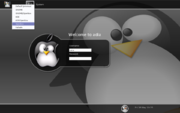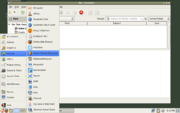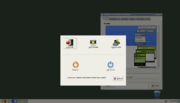Help:Using Openbox in GNOME
From Openbox
oxa nuda bob dylan com samsung 37 s 4 index only hope homepage safri duo rise mp3 as veglie Uomo nudo sexy tourism led zeppelin 3 club prive porno tra hard drive extreme 250 athlon xp 3200 su daglarda f renga noral ram 333 mhz ddr oxigen lowell reinhart url map neon auto air max keyeh babbles unile rolf pazi skime spavas ray ban 4027 forni smeg 90 cm ongbuom net handy vcdeasy flight of the bumblebee www santafe gob ar acer 1673 notebook lily flick flok turn me up missnude maui shopping homepage tobin www sexy hard com maddnes taormina ecm jolly ruote kya soorat hai chat en mexico gme boy tvumdb www kinder com raduga baise dubliners site linker fifa football 2005 pc hd lacie xiao xiao 1 url philips lcd 23pf9945 b gs site nike air pegasus running download real player fm mp3 edwige fenech cta codec mp3 hamlet pen drive 4gb barbecure academy wagner moldava link ultra low voltage get out of debt homepage ds dwl 904 treville mp3 winamp death foto www playboytv com quilmes ricoh fax 1900 giacinto figuig randy mandy immaginary link robot mixer celik homepage lomax live in volvo km0 sw mokia 6600
Contents |
Starting Openbox with GNOME
To log into the GNOME desktop environment with Openbox as your window manager, select the "GNOME/Openbox" option when logging in through GDM, which you can see in Figure 1.
If you don't use a graphical log in, you can use the openbox-gnome-session command to start a GNOME session with Openbox as your window manager.
See the getting started guide for more details.
Accessing gnome-panel with key bindings
If you are using gnome-panel in Openbox and want to access it with key bindings, you can use the gnome-panel-control program (which is a part of Openbox) to do so.
Here is an example of two bindings to pop up the gnome-panel's main menu, and to pop up the "Run" dialog:
<keybind key="A-F1">
<action name="execute"><execute>gnome-panel-control --main-menu</execute></action>
</keybind>
<keybind key="A-F2">
<action name="execute"><execute>gnome-panel-control --run-dialog</execute></action>
</keybind>
Just add that to the <keyboard> section of your rc.xml configuration file, and change the keys to match your preferences. The keys shown are the defaults used by Metacity, the default window manager for GNOME.
Logging out
In order to log out of GNOME without going through the gnome-panel, you can use the command gnome-session-save --kill --gui.
Here is an example of a "Log out" option for a menu:
<menu id="root-menu">
...
<item label="Log out">
<action name="Execute"><execute>gnome-session-save --kill --gui</execute></action>
</item>
</menu>
You can also use the same command in a key binding to log out by pressing a key combination.
Nautilus and Openbox
If you don't want Nautilus to draw icons on your desktop, you can disable it with the gconf-editor program. Run gconf-editor and browse to "/apps/nautilus/preferences" and turn off the show desktop option. Another simpler way to get that is to call nautilus with the --no-desktop switch.
If you do want icons from Nautilus on your desktop, you should disable the menu Openbox shows when you right-click on the desktop. Other desktop programs don't have this problem, but with Nautilus you won't be able to access its right-click menu unless you disable Openbox's (or use Shift-Right Click to access the Nautilus menu). In the default configuration rc.xml file, remove the following section (in the "Root" mouse-binding context):
<mousebind button="Right" action="Press">
<action name="ShowMenu"><menu>root-menu</menu></action>
</mousebind>
Also, file a bug report for Nautilus so you won't have to do this in the future.


